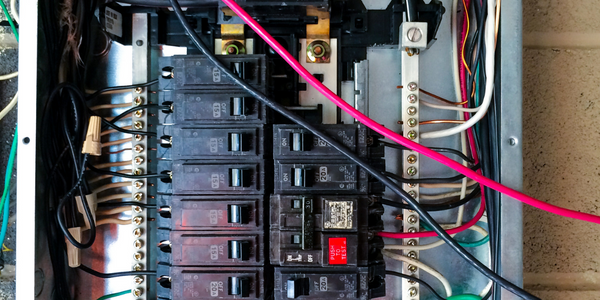下载PDF
Page Trucking Enhances Safety and Compliance with Motive ELD Units
技术
- 网络安全和隐私 - 安全合规
- 功能应用 - 车队管理系统 (FMS)
适用功能
- 维护
- 质量保证
用例
- 租赁金融自动化
- 交通模拟
挑战
Page Trucking 是一家拥有和经营 50 多年历史的家族企业,优先考虑驾驶员安全和监管合规性。然而,当美国 ELD 指令生效后,该公司面临着重大挑战。该指令要求在其车队中安装电子记录设备 (ELD),以提高驾驶员安全并确保遵守交通部 (DOT) 的规定。然而,这一举措遭到了该公司许多司机的抵制,他们都是习惯于纸质日志的老司机,对新技术持谨慎态度。此外,指定路线的服务时间(HOS)标准没有考虑到某些安全细微差别,例如司机需要停车睡觉以避免疲劳驾驶,或者选择采取更长但更安全的路线来避免交通拥堵。
关于客户
Page Trucking 是一家家族拥有和经营的卡车运输和物流公司,总部位于纽约州威兹波特。该公司拥有超过 240 辆车队,高度重视驾驶员安全和监管合规性。该公司重视驾驶员的安全和成功,就像重视为客户提供优质服务一样。尽管在 ELD 指令生效时面临员工的抵制,Page Trucking 仍然致力于满足所有监管要求并提高整个运营的安全性。
解决方案
最初,Page Trucking 仅使用 Motive 进行合规性跟踪和居屋监控。然而,随着公司对该平台越来越熟悉,并且 Motive 不断发展以在保持可用性的同时提供更强大的功能,很明显,它非常适合公司的需求。 Page Trucking 扩大了 Motive 的使用范围,以提交燃油税报告、简化调度操作并创建自定义驾驶员车辆检查报告 (DVIR),以确保整个车队的合规性。该公司从 Motive 获得的一个显着好处是能够监控驾驶员的安全,并通过 Motive 的智能行车记录仪寻找指导和奖励驾驶员的机会。
运营影响
数量效益
相关案例.

Case Study
Digital Transformation in Insurance: A Case Study of Menora Mivtachim
Menora Mivtachim, one of Israel's largest pension fund and insurance carriers, was facing a significant challenge due to demographic trends in Israel. The growing rate of retirement planning and services was putting unprecedented pressure on the already strained insurance sector. The pension claims process was bottlenecked with complexities, bureaucracy, and errors. Menora Mivtachim's existing pension process was heavily manual and spreadsheet-based, requiring a team of 10 full-time employees to manage. The process involved gathering applicant information, conducting personal surveys, compiling bank information, and finalizing agreements. To leverage the growing opportunity in the retirement sector and position themselves as innovative insurtech leaders, Menora Mivtachim needed to digitalize their process, streamline the claims experience, and reduce quote times through automated processes.

Case Study
IoT Connectivity Creates Worldwide Opportunities: A Case Study on Micro Systems and Eseye
Micro Systems S.R.L., a specialist in embedded electronics solutions, designs and manufactures process control and user interface boards for original equipment manufacturers (OEM) across various sectors. One of their core capabilities is building complete, customised IoT ecosystems that help their customers evolve from a product-based business into a service-based business. However, they faced a significant challenge when they launched their first IoT project in 2014 for a customer who needed a bespoke solution that could work anywhere in the world. The customer's new system was being sold globally, which meant that Micro Systems’ solution had to be compatible with multiple network operators across many different countries. This was a complex task, as managing the various networks and frequencies involved would be unworkable. Furthermore, the customer required a single, pocket-sized electronic board that integrated several technologies, including GPS, GSM connectivity, an M2M SIM Card, an RFID module, Wi-Fi, Bluetooth, an accelerometer, and an I/O system.

Case Study
Automation in Mining: Unleashing Productivity and Efficiency with 5G
The mining industry, a significant contributor to global economic activity with revenues exceeding USD 500 billion, is facing a challenge of improving efficiency and profitability. The industry is gradually shifting its focus towards automation as the next area of opportunity. Boliden, one of the world's most successful mining companies, operates the Aitik mine, the largest open pit in Europe. The Aitik mine is expanding, and with the increase in production from 36 million metric tons of ore to 45 million metric tons, the amount of rock removed will also increase significantly. However, increasing the number of machines required for rock removal in a busy mine is not a straightforward task. Additionally, every blast creates toxic gases that need to dissipate before humans can enter the area and begin excavation. The challenge lies in improving efficiency, managing the increased production, and ensuring safety in the harsh mining environment.

Case Study
ANZ Bank's Digital Transformation with Nintex Advanced Workflow
ANZ Bank, one of the top 50 banks in the world and the fastest-growing bank in Indonesia, was facing a challenge with its rapidly increasing transaction volume. The bank's existing business processes and workflow were becoming overwhelmed. Like most banks in Indonesia, ANZ was manually handling document submission and verification. Customers filled out paper loan applications and supporting documents, then delivered them to bank branches by mail or courier. Branch officers traveled to the bank’s headquarters or used postal mail, email, and phone calls to submit loan documents for verification. Lost or inaccurate documents created more emails and phone calls. Additionally, ANZ had to adhere to strict verification and financial regulations, including the Foreign Accounts Compliance Act. This act requires that all banks outside the United States provide key information about U.S. clients, including citizenship validation, to the Internal Revenue Service–a complex yet crucial process.

Case Study
Streamlining Agricultural Automation with Eaton’s Package Solution
Grossi Electric, a full-service electrical contracting company, was tasked with facilitating the hulling, dehydrating, and preparation processes at a walnut processing plant in Waterford, California. The company aimed to explore innovative options for creating cleaner and more efficient control panels that would eliminate the intensive time, labor, and costs associated with excessive point-to-point wiring. As a rapidly growing electrical contracting company, Grossi Electric was also concerned about managing risk and cost while attempting to establish a new and unfamiliar service offering in a mature market for control products. The walnut processing plant presented a prime learning opportunity for the company to discover the best way to build more tailored control panels for its customers. The challenge was to enable a lean automation process that was smarter, simpler, more effective, and of unique advantage for clients.

Case Study
ALCAN Systems: Revolutionizing Cellular and Satellite Communication with IoT
ALCAN Systems, a start-up founded in 2016, aimed to create a low-cost smart antenna system for cellular and satellite communication. The company was developing liquid-crystal-based phased-array antennas that allow high-performance electronic beam-steering in a compact, lightweight package. However, the development of these innovative antennas posed significant challenges. Traditional mobile technology used omnidirectional antennas that provided coverage from as many directions as possible. This approach was not suitable for the future of satellite broadband and millimeter-wave 5G. For these technologies to work effectively, the end-user needed a constant line of sight to the satellite, which required a very high directivity and gain to maintain contact without excessive power use. The same was true for 5G, especially at very high frequencies where loss from waves passing through the air and other materials was much higher. ALCAN Systems needed a solution that could overcome these challenges and deliver reliable high-speed data links in challenging environments.





